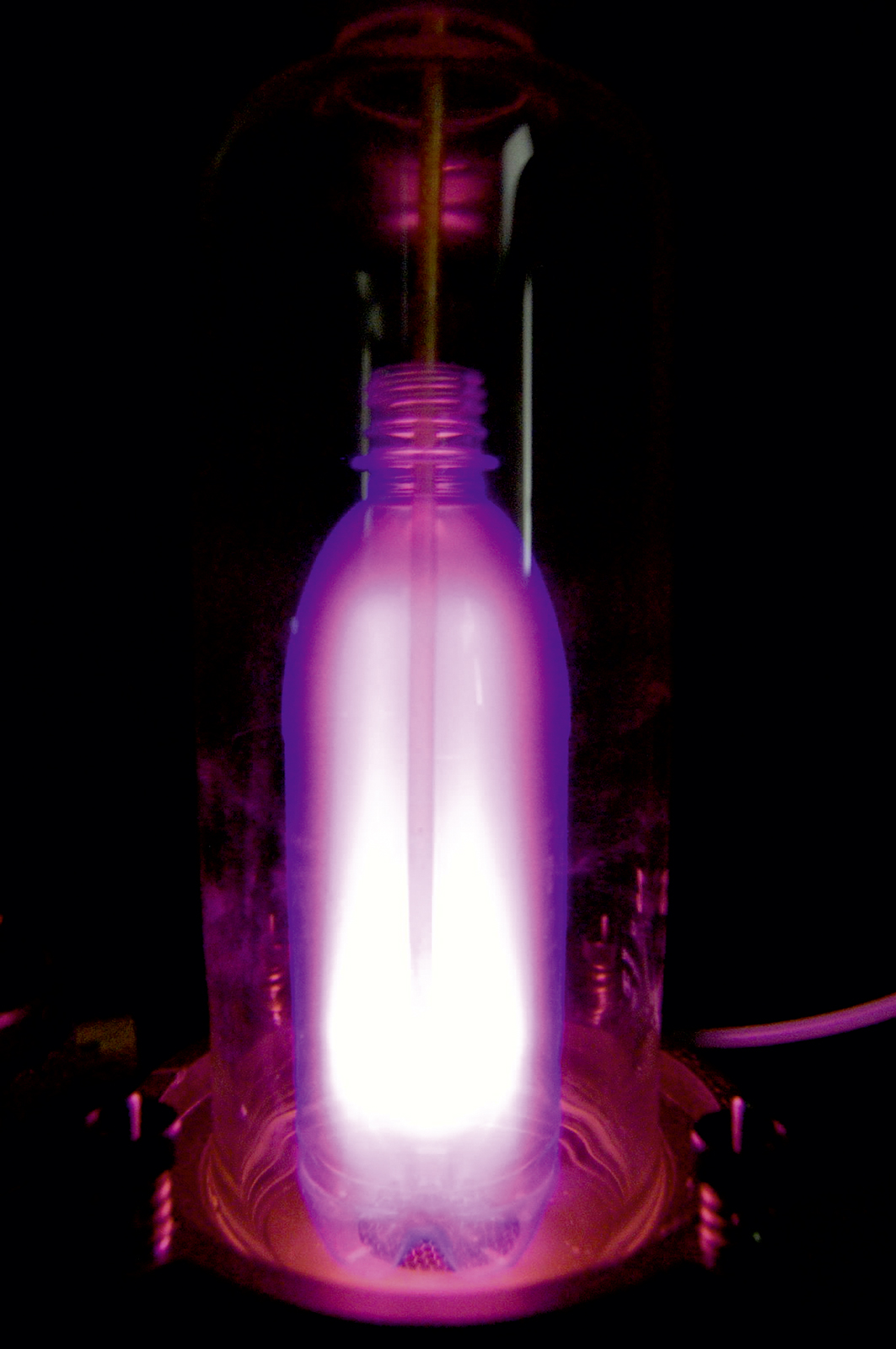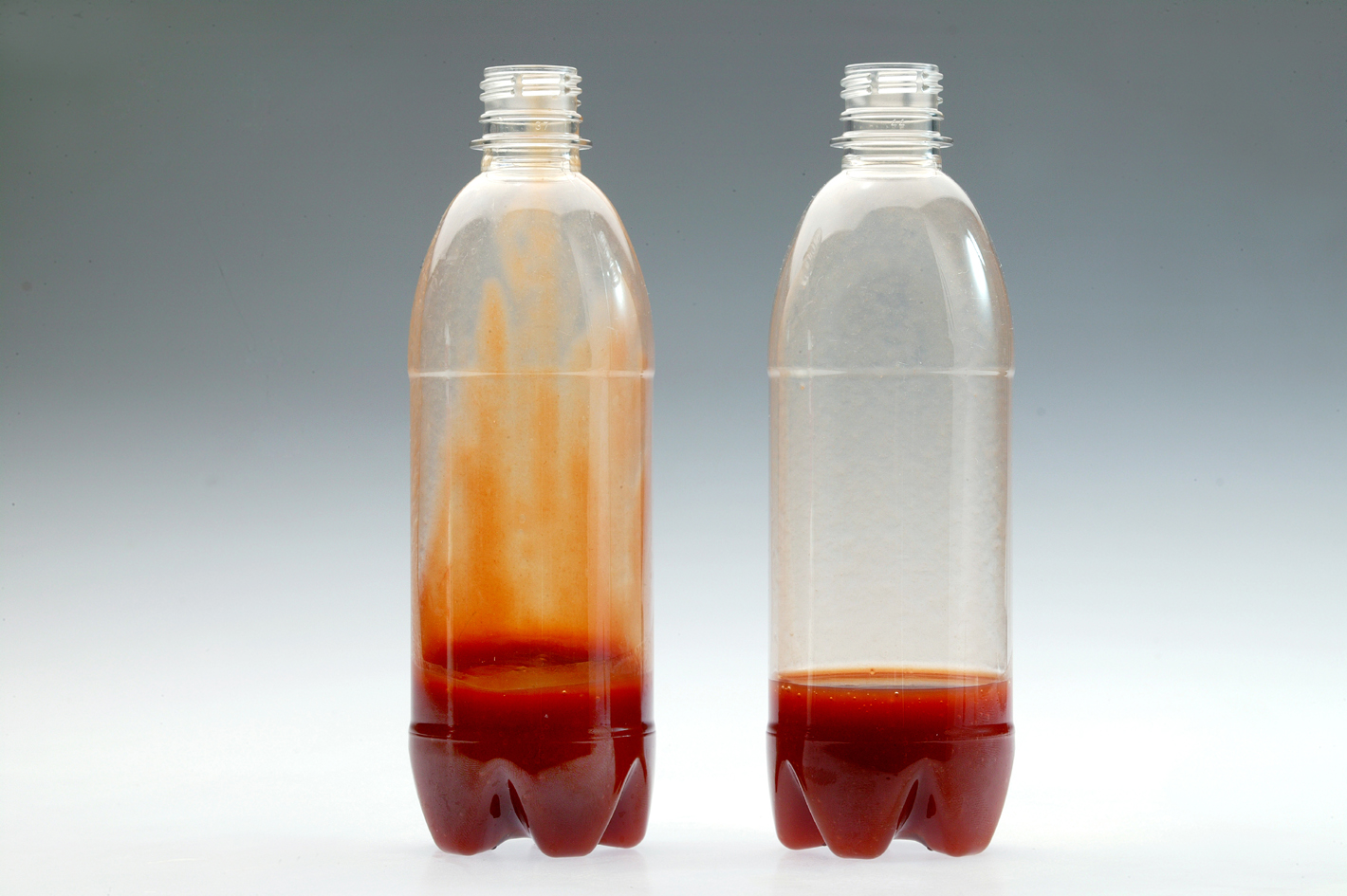Fraunhofer IGB has developed surface modifications for packaging materials that lead to decreased adhesion of contents. The research forms part of a joint project with the Fraunhofer Institute for Process Engineering and Packaging IVV (Freising near Munich) and several industrial partners, funded by the German Ministry of Education and Research.
The aim is to reduce the amount of residues left in the packages by at least half. At the same time, this additional function must not negatively affect the packaging’s basic mechanical or barrier properties or other aspects of its processability. Product safety is also paramount.
Plasma process enables nano-coatings
The surface modifications are applied using low-pressure vacuum plasma (PECVD) processes, where very thin polymeric layers are deposited on the inside of the packaging during the gaseous phase. The layers are typically thinner than 50 nanometers, while the required thickness of the coating depends on the roughness of the packaging material and can be adjusted by varying process parameters such as pressure, gas flow, or treatment time.
To achieve dehesive properties, the interaction forces between package surface and fill goods must be minimized. This effect can be obtained by creating coatings with specific chemical composition and adapted physical properties. We evaluate predominantly hydrophobic coatings (e.g. silanes, siloxanes, fluorosilanes, and fluorocarbons).
 Fraunhofer Institute for Interfacial Engineering and Biotechnology IGB
Fraunhofer Institute for Interfacial Engineering and Biotechnology IGB

